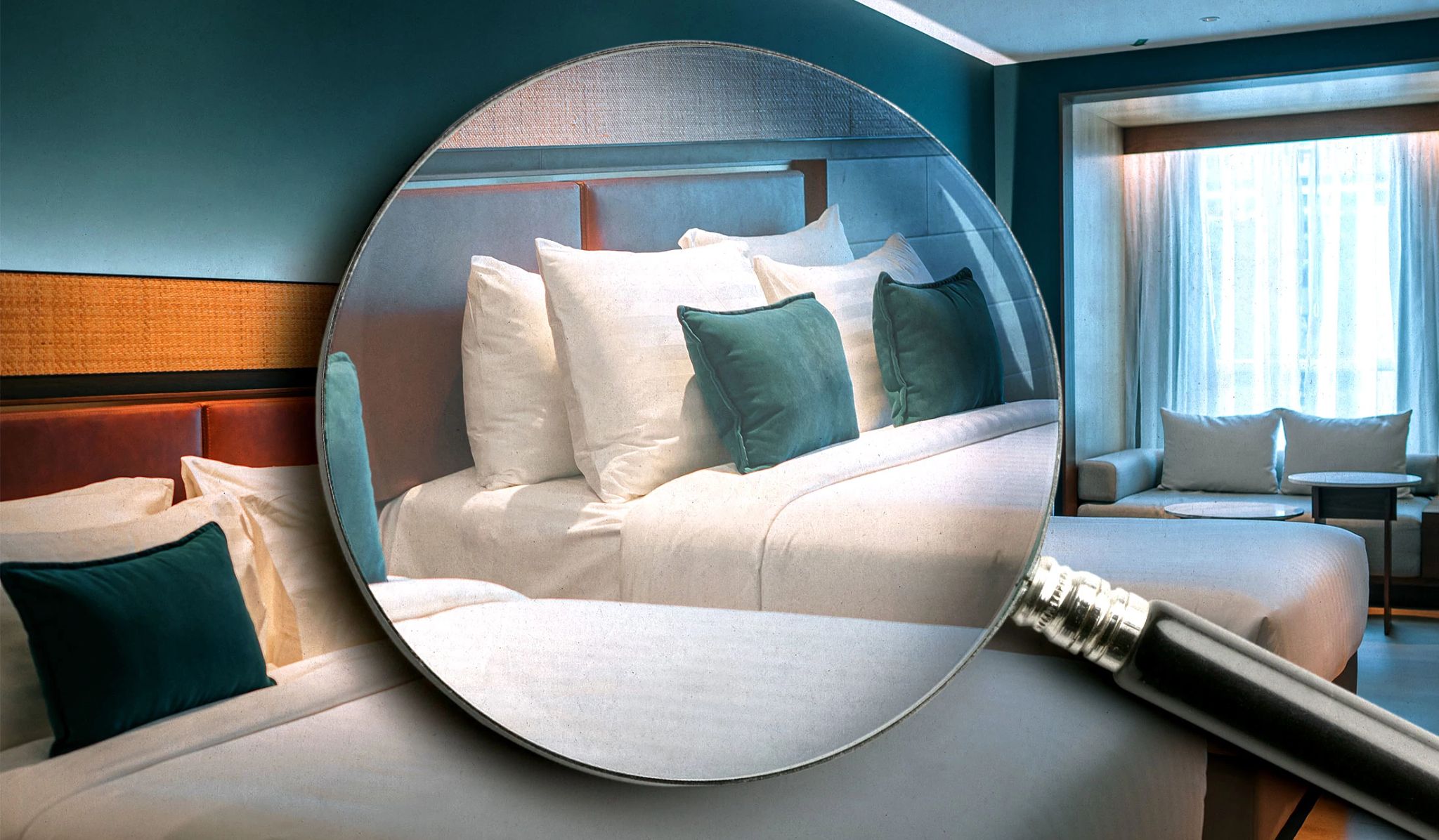AARP Hearing Center


You finally made it to your hotel room and it’s time to relax, right? Not so fast.
These days you can’t always assume that when you check in, your room will be clean and secure. Beneath a seemingly clean surface could lurk some unpleasant surprises. That’s especially the case due to changes in hotel practices stemming from COVID-19 and post-pandemic staffing shortages.


AARP Membership— $12 for your first year when you sign up for Automatic Renewal
Get instant access to members-only products and hundreds of discounts, a free second membership, and a subscription to AARP the Magazine.
“Since the pandemic, there’s less housekeeping per day,” says Sean O’Neill, hotel editor for the travel industry news site Skift. “It increases the chance that the room cleaning won’t be as thorough.”
A housekeeper now typically cleans 13 to 16 rooms a day, which averages about 30 to 40 minutes per room, says David J. Sangree, president of consulting firm Hotel & Leisure Advisors. “Sometimes the housekeepers don’t have enough time to clean it properly.”
Here are eight things to do to help ensure a clean, comfortable stay.
1. Look before you book.
“Start by looking at review sites,” Sangree says. “A hotel with real cleanliness issues will have multiple complaints.” In a recent study by the mattress manufacturer Amerisleep of inspections of more than 3,000 hotels, online customer reviews — as well as room rates — were good indicators of cleanliness. Hotels with higher customer reviews typically had fewer general hygiene violations. And the most expensive hotels ($500 or more per night) had the fewest violations of any other price category. Meanwhile, those under $99 per night had twice as many as any other group.
2. Inspect when you arrive.
Sangree advises assessing the lobby, looking for dirt, stains and discolorations when you enter. These can be a red flag. “Look at the elevator, the hallway. Are those clean?” When you enter the room, look for stains and whether the carpet has been vacuumed. But the bathroom is the key in cleanliness. “Check the shower curtain or the glass shower panel, which should be spotless,” he adds. If it’s not, “you can either request a new room or request a housekeeper come to the room and correct the problem.” This shouldn’t reflect on the entire hotel, however, “as a housekeeping staff is made up of many individuals, so just because one area may have a problem does not mean the entire building would.”
Cameron Sperance, senior hotels reporter for travel website The Points Guy, suggests that you run your finger across the headboard and the counter to see how deeply the housekeepers are cleaning the rooms. Check the wastebaskets, too. They should be completely empty. If not, that’s a sign that the room cleaning was not thorough.






























































You Might Also Like
Sand, Sun and Fun
Consider these family vacation ideas for fun beaches where sand and sun reign such as Hawai‘i, the Caribbean and FloridaFind the Road Trip to Match Your Inner Map
Are you a foodie or history buff? Whatever your personality, we have the perfect journey for you
25 Great Ways to Save on Your Next Vacation
Travel industry pros share tips to help you keep costs down, without skimping on funRecommended for You